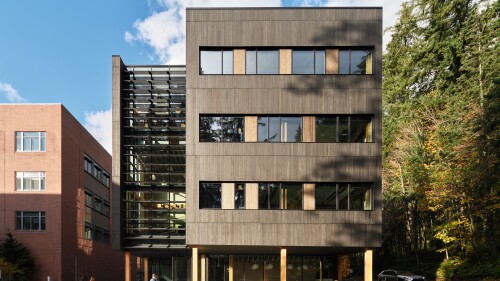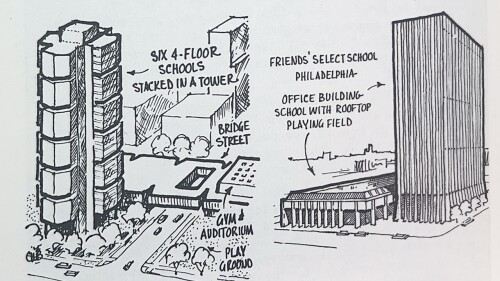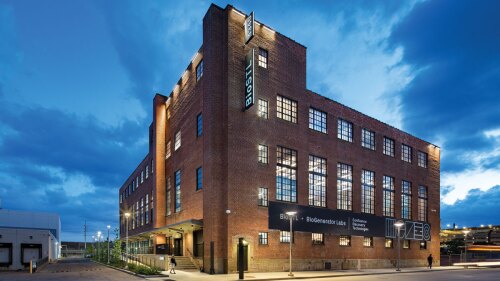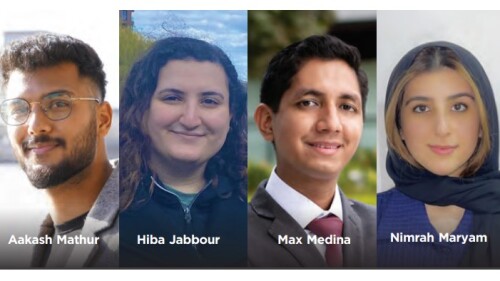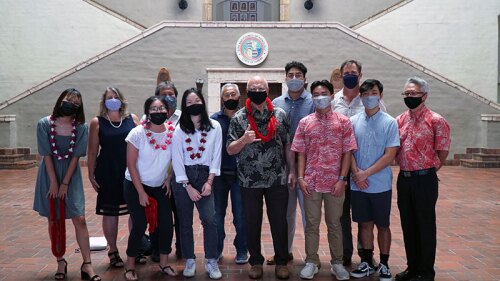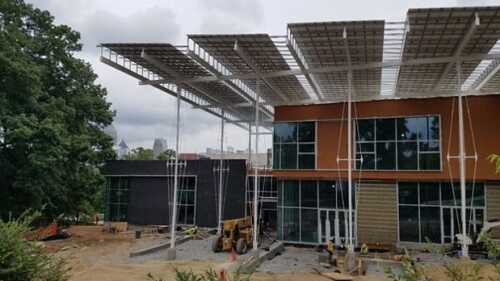Universities and Educational Facilities
Molly Maybrun, chief development officer of local developer Fifth Space, and Wallace Whittier, senior real estate officer for University of California, San Francisco, spoke at the 2025 ULI Fall Meeting about their collaboration to build a new proton therapy cancer center at Fifth Space’s Dogpatch Power Station, a multiphase master-planned mixed-use development on the waterfront at the southern edge of San Francisco’s Mission Bay.
As the environmental impact of construction remains heavily scrutinized amid growing concerns around climate change and resource depletion, universities are turning to new design strategies that prioritize innovation, environmental integration, and sustainability.
In the July-August 1967 edition of Urban Land, Thurston H. Ross delivered a speech on high-rise schools, the abandonment of the front and backyard concept, and a return to the town meeting type of government in the future.
In late September 2019, 7,300 commuter students were settling into their routines at the University of Southern Maine (USM) in Portland, where the academic year had just begun. Then, at the end of the month, a fire main broke beneath the repurposed industrial building serving as the student center, flooding it with six inches of mud. City officials declared the building uninhabitable, leaving the school without a student center.
Georgetown’s M.S. in Global Real Assets, a collaboration between a top-ranked business school and a premier center for global real estate, prepares you to address challenges at the intersection of real estate, infrastructure, and sustainability.
Public-private partnership creates a city within a city on 355 acres of undeveloped land located on the 100-year-old ASU campus.
How can academic institutions and private sector partners collaborate to spur development in a challenging economy?
At the Europe ULI Hines Student Competition final, the team from the University of Manchester in England sized up their fellow competitors. They were impressed by the other presentations, but they felt confident that their own had a slight edge because of its core strength: its diversity.
Honolulu Mayor Rick Blangiardi recognized teams from ‘Iolani School and Kalani High School for taking first and third place, respectively, in the ULI UrbanPlan National Championships. The competition was held virtually over Zoom in June with 12 student teams from across the United States participating. ‘Iolani, Kalani, and California’s Berkeley High advanced to the final round, and in a close competition, ‘Iolani won first place.
Georgia Tech’s Eco-Commons project demonstrates cutting-edge sustainable building concepts in partnership with the Kendeda Foundation. Members of ULI Atlanta were recently included in a hard-hat tour of the site, which is under construction.


